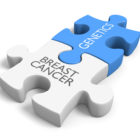The breast cancer risk assessment tool, also called the Gail Model, is intended for doctors and not the general public, but you should definitely know about to talk with your doctor. It estimates a woman’s risk of developing invasive breast cancer.
Invasive breast cancer is cancer that has spread from where it started in the breast into surrounding, healthy tissue. Most invasive breast cancers start in the ducts (tubes that carry milk from the lobules to the nipple). Invasive breast cancer can spread to other parts of the body through the blood and lymph systems. Also called infiltrating breast cancer.
If you have already had breast cancer, lobular breast cancer in site (LCIS) (abnormal cells in the lobules of the breast that seldom becomes invasive cancer) or ductal carcinoma in situ (DCIS) (A noninvasive condition in which abnormal cells are found in the lining of a breast duct but have not spread outside the duct to other tissues in the breast) this tool is not for you.
Some risk factors such as previous radiation therapy in the area of the breasts for Hodgkin lymphoma.
Here are the questions on the Breast Cancer Risk Assessment Tool:
- Do you have a medical history of atypical hyperplasia of the breast
- Age over 35.
- Age at first menstrual period (earlier is a higher risk factor)
- Age first baby was born (older you are when have first full term baby, the higher your risk)
- Number of first degree relatives with breast cancer (Your risk increases with the number of siblings, offspring or parent with breast cancer)
- Previous breast biopsy increases risk
- Your race/ethnicity – White women have highest followed by Black, Hispanic, Asian, and American Indian
Your doctor will use this information as part of a calculation for your risk along with your exam and your mammogram.
But not all women are getting a mammogram. The CDC reports that less than two out of three women age 40 to 49 years have had a mammogram in the past two years. Women over age 65 years do only minimally better. Women age 50 to 64 years are most likely to get a mammogram – about three out of four.
How much education a woman has also matters. Of the women who have gotten a mammogram in the past two years, about half have no high school diploma or a GED; about two thirds of women with a high school diploma or a GED have gotten one; about 75% of women with some college or more have gotten one.
So talk with your doctor about the Gail Model and find out what your level of risk for breast cancer is. And get a mammogram.
Click on the music video to hear my mammogram song that tells you more about getting a mammogram.
Click Here to get my free 3 video series called Health Accelerator and learn what test results you need to have, how to prepare for your annual exam and 5 tips to jump start your health today.
Please Like and share with your friends and family.

